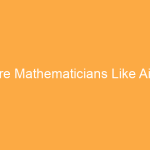Parallel forces are a fundamental concept in the realm of physics, engineering, and other scientific disciplines. Understanding parallel forces is crucial for comprehending various phenomena, from the stability of structures to the dynamics of fluid flow. This article aims to delve into the concept of parallel forces, exploring their characteristics, effects, and applications in a comprehensive manner. By delving into the intricacies of parallel forces, we gain a deeper appreciation for the forces that shape our world.
Parallel forces are defined as forces that act along the same line of action and in the same direction or opposite directions. Unlike perpendicular forces, which act at right angles to each other, parallel forces exert their influence directly parallel or antiparallel to one another. Parallel forces play a significant role in maintaining equilibrium, causing objects to accelerate or decelerate, and influencing the structural integrity of various systems.
The concept of parallel forces is crucial in understanding numerous physical phenomena. For instance, in the design of bridges, architects must consider the parallel forces exerted by the weight of the bridge and the traffic it carries to ensure structural stability. Similarly, in fluid dynamics, parallel forces are instrumental in shaping fluid flow patterns, influencing the efficiency of aircraft wings and the performance of turbines.
Characteristics of Parallel Forces
Linearity and Collinearity
Parallel forces act along a straight line, known as the line of action. This linearity implies that the forces are directed either in the same direction or in opposite directions, resulting in either a cumulative or counteracting effect.
Magnitude and Direction
The magnitude of parallel forces refers to their strength, measured in units of newtons (N). The direction of parallel forces is specified by their orientation along the line of action, which can be either positive or negative depending on the direction.
Effects of Parallel Forces
Equilibrium and Motion
When multiple parallel forces act on an object, they can result in equilibrium, where the net force is zero and the object remains stationary. Alternatively, if the forces are unbalanced, the object will undergo acceleration or deceleration in the direction of the net force.
Stress and Strain
In solid materials, parallel forces can induce stress and strain. Stress refers to the internal force per unit area, while strain represents the deformation caused by the stress. Parallel forces can cause tensile stress, compressive stress, or shear stress, depending on their direction and magnitude.
Applications of Parallel Forces
Structural Engineering
In structural engineering, parallel forces are crucial in designing and analyzing structures such as bridges, buildings, and aircraft. Engineers must consider the parallel forces exerted by gravity, wind loads, and other factors to ensure structural stability and integrity.
Fluid Dynamics
In fluid dynamics, parallel forces play a vital role in shaping fluid flow patterns. The lift force generated by aircraft wings, for instance, is a result of the parallel forces exerted by the air flowing over and under the wing.
Mechanical Engineering
In mechanical engineering, parallel forces are encountered in various applications, such as the design of gears, pulleys, and mechanisms. Understanding parallel forces is essential for analyzing and optimizing the performance of mechanical systems.
Additional Considerations
Resultant Force
When multiple parallel forces act on an object, their combined effect can be represented by a single force, known as the resultant force. The resultant force is equal to the algebraic sum of the individual forces and acts along the same line of action.
Moments
Moments, also known as torques, are generated by parallel forces acting at different distances from a pivot point. Moments can cause objects to rotate or twist, and their magnitude depends on the force and the distance from the pivot point.
Friction
Friction is a force that opposes the relative motion between two surfaces in contact. Friction can act parallel to the surfaces, resisting motion or causing objects to slide. Understanding parallel forces is essential in analyzing and mitigating the effects of friction.
Also Read: 1.2m in Feet: A Comprehensive Guide
Examples of Parallel Forces
Numerous real-world examples illustrate the concept of parallel forces. Magnets exert parallel forces of attraction or repulsion, causing objects to move towards or away from each other. The forces of gravity acting on objects near the Earth’s surface are also parallel forces, pulling objects towards the center of the Earth.
In conclusion, parallel forces are a fundamental aspect of physics and engineering, influencing a wide range of phenomena and applications. Understanding parallel forces is essential for comprehending the behavior of objects under the influence of multiple forces acting along the same line of action. By delving into the characteristics, effects, and applications of parallel forces, we gain a deeper appreciation for the forces that shape our world.















Leave a Comment